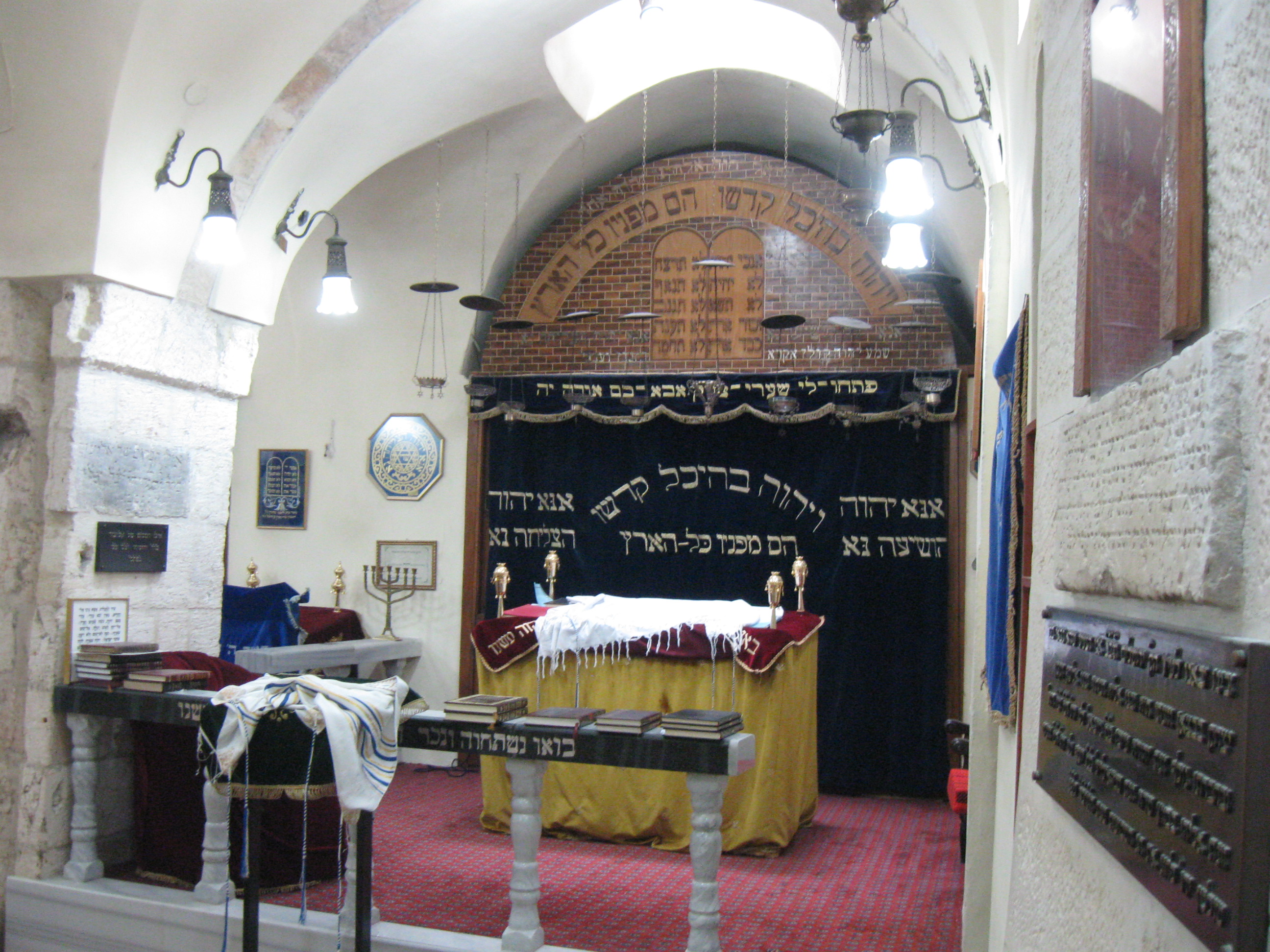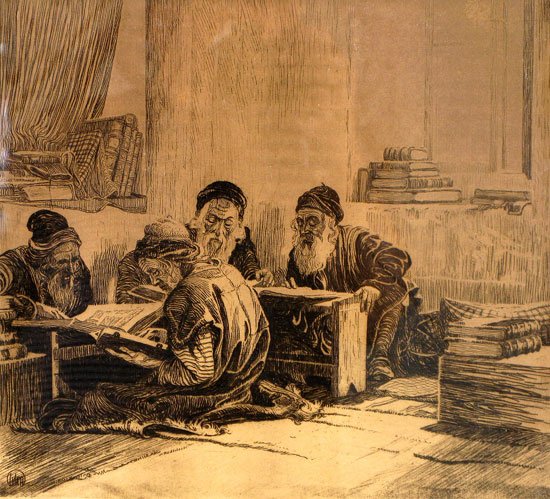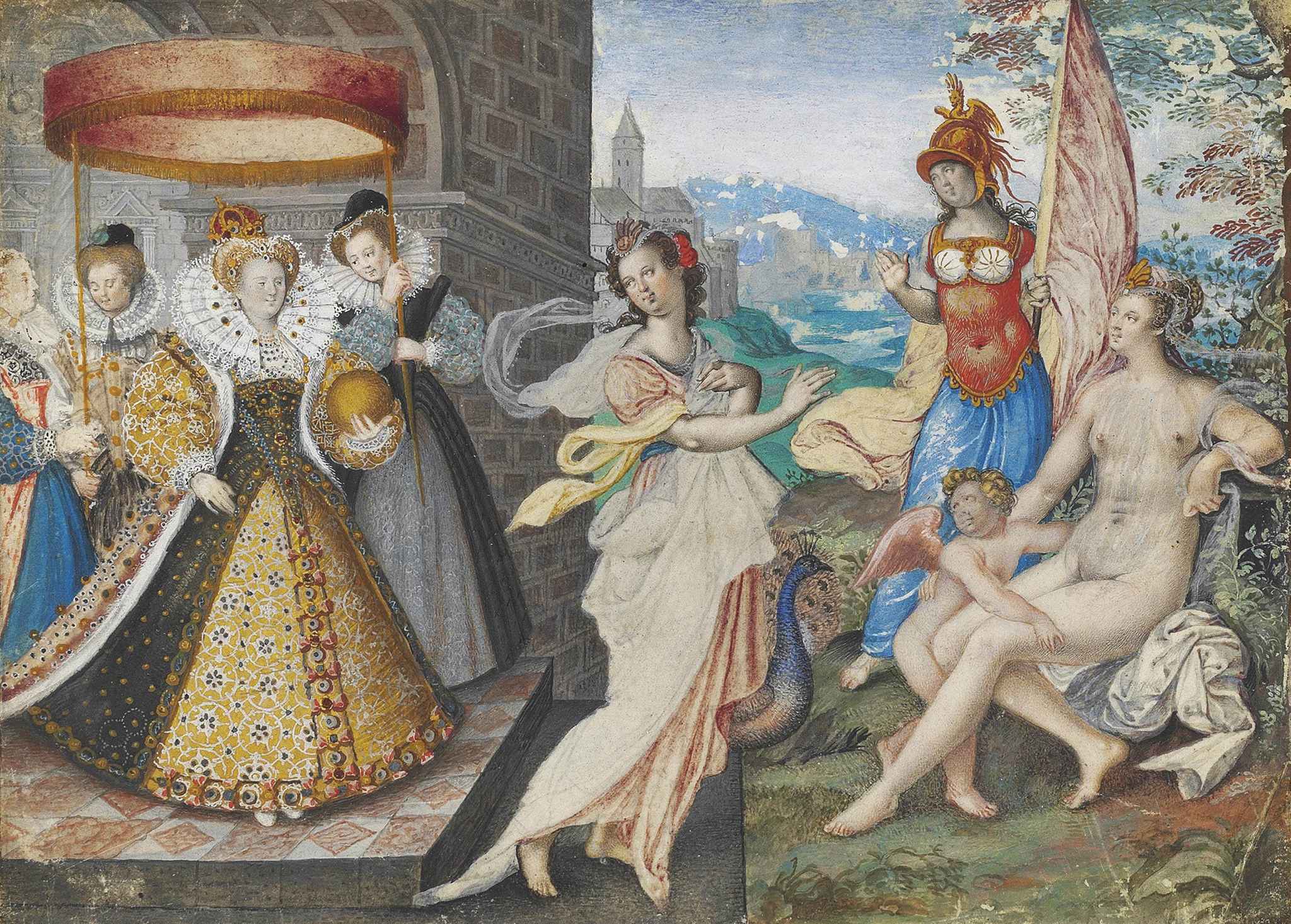|
Jacob Al-Qirqisani
Jacob Qirqisani (c. 890 ŌĆō c. 960) ( ar, ž¦ž©┘ł █ī┘łž│┘ü █īž╣┘é┘łž© ž¦┘ä┘éž▒┘éž│ž¦┘å█ī ''╩ŠAb┼½ Y┼½suf Ya╩┐q┼½b al-Qirqis─ün─½'', he, ūÖūóū¦ūæ ūæū¤ ūÖū”ūŚū¦ ūöū¦ū©ū¦ūĪūÉūĀūÖ ''Ya╩┐qov ben Yiß╣ŻßĖźaq haß╣óerqesi'') was a Karaite dogmatist and exegete who flourished in the first half of the tenth century. His origins are unknown. His patronym "Isaac" is the addition of a later copyist, and may reflect no more than the genealogy of the biblical patriarchs, while his surname has been taken as referring to either ancient Circesium ( al-Busayra) in eastern Syria or Karkas─ün, near Baghdad. He seems to have traveled throughout the Middle East, visiting the centers of Islamic learning, in which he was well-versed. In 937 Qirqisani wrote an Arabic work on the Jewish preceptsŌĆöunder the title ''Kit─üb al-Anw─ür wal-Mar─üqib'' (, known in Hebrew as ''Sefer ha-Me'orot,'' or ''Sefer ha-Ma'or''), with the subtitle ''Kitab al-Shara'i'' (''Sefer Mitzvot Gadol'')ŌĆöand a commentary entitled '' ... [...More Info...] [...Related Items...] OR: [Wikipedia] [Google] [Baidu] |
Karaite Judaism
Karaite Judaism () or Karaism (, sometimes spelt Karaitism (; ''Yahadut Qara'it''); also spelt Qaraite Judaism, Qaraism or Qaraitism) is a Jewish religious movement characterized by the recognition of the written Torah alone as its supreme authority in ''halakha'' (Jewish religious law) and theology. Karaites believe that all of the divine commandments which were handed down to Moses by God were recorded in the written Torah without any additional Oral Law or explanation. Unlike mainstream Rabbinic Judaism, which considers the Oral Torah, codified in the Talmud and subsequent works, to be authoritative interpretations of the Torah, Karaite Jews do not believe that the written collections of the oral tradition in the Midrash or the Talmud are binding. When they read the Torah, Karaites strive to adhere to the plain or most obvious meaning (''peshat'') of the text; this is not necessarily the literal meaning of the text, instead, it is the meaning of the text that would have be ... [...More Info...] [...Related Items...] OR: [Wikipedia] [Google] [Baidu] |
Antigonus Of Sokho
Antigonus of Sokho ( he, ūÉūĀūśūÖūÆūĀūĢūĪ ūÉūÖū® ūĪūĢūøūĢ) was the first scholar of whom Pharisee tradition has preserved not only the name but also an important theological doctrine. He flourished about the first half of the third century BCE. According to the Mishnah, he was the disciple of Simon the Just ( he, ū®ū×ūóūĢū¤ ūöū”ūōūÖū¦). Antigonus is the first noted Jew to have a Greek name, a fact commonly discussed by scholars regarding the extent of Hellenic influence on Judaism following the conquest of Judaea by Alexander the Great. A street in the Katamonim neighborhood of Jerusalem is named after him. Sadducees and Boethusians Traditional Jewish sources connect Antigonus with the origin of the Sadducees and Boethusians. These sources argue that the Sadducee group originated ''in tandem'' with the Boethusian group during the Second Temple period, with their founders, Zadok and Boethus, both being individual students of Antigonus of Sokho. Surviving quotation His sole ... [...More Info...] [...Related Items...] OR: [Wikipedia] [Google] [Baidu] |
Haggadah
The Haggadah ( he, ūöųĘūÆųĖų╝ūōųĖūö, "telling"; plural: Haggadot) is a Jewish text that sets forth the order of the Passover Seder. According to Jewish practice, reading the Haggadah at the Seder table is a fulfillment of the mitzvah to each Jew to tell their children the story from the Book of Exodus about God bringing the Israelites out of slavery in Egypt, with a strong hand and an outstretched arm. History Authorship According to Jewish tradition, the Haggadah was compiled during the Mishnaic and Talmudic periods, although the exact date is unknown. It could not have been written earlier than the time of Judah bar Ilai (circa 170 CE), who is the latest tanna to be quoted therein. Abba Arika and Samuel of Nehardea (circa 230 CE) argued on the compilation of the Haggadah, and hence it had not been completed as of then. Based on a Talmudic statement, it was completed by the time of "Rav Nachman". There is a dispute, however, to which Rav Nachman the Talmud was referring: Acc ... [...More Info...] [...Related Items...] OR: [Wikipedia] [Google] [Baidu] |
Rabbanites
Rabbinic Judaism ( he, ūÖūöūōūĢū¬ ū©ūæūĀūÖū¬, Yahadut Rabanit), also called Rabbinism, Rabbinicism, or Judaism espoused by the Rabbanites, has been the mainstream form of Judaism since the 6th century CE, after the codification of the Babylonian Talmud. Rabbinic Judaism has its roots in Pharisaic Judaism and is based on the belief that Moses at Mount Sinai received both the Written Torah (''Torah she-be-Khetav'') and the Oral Torah (''Torah she-be-al Peh'') from God. The Oral Torah, transmitted orally, explains the Written Torah. At first, it was forbidden to write down the Oral Torah because the rabbis feared that it would become rigid and lose its flexibility, but after the destruction of the Second Temple they decided to write it down in the Talmud and other rabbinic texts. Rabbinic Judaism contrasts with the Sadducees, Karaite Judaism and Samaritanism, which do not recognize the Oral Torah as a divine authority nor the rabbinic procedures used to interpret Jewish scripture. ... [...More Info...] [...Related Items...] OR: [Wikipedia] [Google] [Baidu] |
Acts Of The Apostles
The Acts of the Apostles ( grc-koi, ╬ĀŽü╬¼╬Š╬Ą╬╣Žé ß╝łŽĆ╬┐ŽāŽäŽī╬╗Žē╬Į, ''Pr├Īxeis Apost├│l┼Źn''; la, Act┼½s Apostol┼Źrum) is the fifth book of the New Testament; it tells of the founding of the Christian Church and the spread of its message to the Roman Empire. It gives an account of the ministry and activity of Christ's apostles in Jerusalem and other regions, after Christ's death, resurrection, and ascension. Acts and the Gospel of Luke make up a two-part work, LukeŌĆōActs, by the same anonymous author. It is usually dated to around 80ŌĆō90 AD, although some scholars suggest 90ŌĆō110. The first part, the Gospel of Luke, tells how God fulfilled his plan for the world's salvation through the life, death, and resurrection of Jesus of Nazareth. Acts continues the story of Christianity in the 1st century, beginning with the ascension of Jesus to Heaven. The early chapters, set in Jerusalem, describe the Day of Pentecost (the coming of the Holy Spirit) and the growth of the ... [...More Info...] [...Related Items...] OR: [Wikipedia] [Google] [Baidu] |
Gospel
Gospel originally meant the Christian message ("the gospel"), but in the 2nd century it came to be used also for the books in which the message was set out. In this sense a gospel can be defined as a loose-knit, episodic narrative of the words and deeds of Jesus, culminating in his trial and death and concluding with various reports of his post-resurrection appearances. Modern scholars are cautious of relying on the gospels uncritically, but nevertheless, they provide a good idea of the public career of Jesus, and critical study can attempt to distinguish the original ideas of Jesus from those of the later authors. The four canonical gospels were probably written between AD 66 and 110. All four were anonymous (with the modern names added in the 2nd century), almost certainly none were by eyewitnesses, and all are the end-products of long oral and written transmission. Mark was the first to be written, using a variety of sources. The authors of Matthew and Luke both independently ... [...More Info...] [...Related Items...] OR: [Wikipedia] [Google] [Baidu] |
First Council Of Nicaea
The First Council of Nicaea (; grc, ╬Ø╬»╬║╬▒╬╣╬▒ ) was a council of Christian bishops convened in the Bithynian city of Nicaea (now ─░znik, Turkey) by the Roman Emperor Constantine I in AD 325. This ecumenical council was the first effort to attain consensus in the church through an assembly representing all Christendom. Hosius of Corduba may have presided over its deliberations. Its main accomplishments were settlement of the Christological issue of the divine nature of God the Son and his relationship to God the Father, the construction of the first part of the Nicene Creed, mandating uniform observance of the date of Easter, and promulgation of early canon law. Overview The First Council of Nicaea was the first ecumenical council of the church. Most significantly, it resulted in the first uniform Christian doctrine, called the Nicene Creed. With the creation of the creed, a precedent was established for subsequent local and regional councils of bishops (synods) ... [...More Info...] [...Related Items...] OR: [Wikipedia] [Google] [Baidu] |
613 Commandments
The Jewish tradition that there are 613 commandments ( he, ū¬ū©ūÖū┤ūÆ ū×ū”ūĢūĢū¬, taryag mitzvot) or mitzvot in the Torah (also known as the Law of Moses) is first recorded in the 3rd century AD, when Rabbi Simlai mentioned it in a sermon that is recorded in Talmud Makkot 23b. The 613 commandments include "positive commandments", to perform an act (), and "negative commandments", to abstain from certain acts (). The negative commandments number 365, which coincides with the number of days in the solar year, and the positive commandments number 248, a number ascribed to the number of bones and main organs in the human body. Although the number 613 is mentioned in the Talmud, its real significance increased in later medieval rabbinic literature, including many works listing or arranged by the . The most famous of these was an enumeration of the 613 commandments by Maimonides. Many of the cannot be currently observed, following the destruction of the Second Temple, though they ... [...More Info...] [...Related Items...] OR: [Wikipedia] [Google] [Baidu] |
Prophet
In religion, a prophet or prophetess is an individual who is regarded as being in contact with a divine being and is said to speak on behalf of that being, serving as an intermediary with humanity by delivering messages or teachings from the supernatural source to other people. The message that the prophet conveys is called a prophecy. Claims of prophethood have existed in many cultures and religions throughout history, including Judaism, Christianity, Islam, ancient Greek religion, Zoroastrianism, Manichaeism, Hinduism , and many others. Etymology The English word ''prophet'' is the transliteration of a compound Greek word derived from ''pro'' (before/toward) and ''phesein'' (to tell); thus, a ŽĆŽü╬┐Žå╬«Žä╬ĘŽé (''prophßĖŚt─ōs'') is someone who conveys messages from the divine to humans, including occasionally foretelling future events. In a different interpretation, it means advocate or speaker. In Hebrew, the word ūĀųĖūæų┤ūÖūÉ (''n─üv├«''), "spokesperson", traditionally t ... [...More Info...] [...Related Items...] OR: [Wikipedia] [Google] [Baidu] |
Divinity
Divinity or the divine are things that are either related to, devoted to, or proceeding from a deity.divine ŌĆō Dictionary.com. What is or is not divine may be loosely defined, as it is used by different s. Etymology The root of the word ''divine'' is literally "godly", but the use varies significantly depending on which deity is being discussed.Usages Divinity as a quality has two distinct usages: *Divine force or power - Powers or forces that are universal, or transcend human capacities *Divinity applied to mortals - Qualities of individuals who are considered to have some special access or relationship to the divine. Overlap occurs between these usages ...[...More Info...] [...Related Items...] OR: [Wikipedia] [Google] [Baidu] |
Paul The Apostle
Paul; grc, ╬Ā╬▒ß┐”╬╗╬┐Žé, translit=Paulos; cop, Ō▓ĪŌ▓üŌ▓®Ō▓ŚŌ▓¤Ō▓ź; hbo, ūżūÉūĢū£ūĢūĪ ūöū®ū£ūÖūŚ (previously called Saul of Tarsus;; ar, ž©┘ł┘äž│ ž¦┘äžĘž▒ž│┘łž│┘Ŗ; grc, ╬Ż╬▒ß┐”╬╗╬┐Žé ╬ż╬▒ŽüŽā╬ĄŽŹŽé, Sa┼®los Tarse├║s; tr, Tarsuslu Pavlus; la, Paulus Tarsensis AD), commonly known as Paul the Apostle and Saint Paul, was a Christian apostle who spread the teachings of Jesus in the first-century world. Generally regarded as one of the most important figures of the Apostolic Age, he founded several Christian communities in Asia Minor and Europe from the mid-40s to the mid-50s AD. According to the New Testament book Acts of the Apostles, Paul was a Pharisee. He participated in the persecution of early disciples of Jesus, possibly Hellenised diaspora Jews converted to Christianity, in the area of Jerusalem, prior to his conversion. Some time after having approved of the execution of Stephen, Paul was traveling on the road to Damascus so that he might find any Christians ... [...More Info...] [...Related Items...] OR: [Wikipedia] [Google] [Baidu] |
Jesus
Jesus, likely from he, ūÖųĄū®ūüūĢų╝ūóųĘ, translit=Y─ō┼Ī┼½a╩┐, label=Hebrew/Aramaic ( AD 30 or 33), also referred to as Jesus Christ or Jesus of Nazareth (among other names and titles), was a first-century Jewish preacher and religious leader; he is the central figure of Christianity, the world's largest religion. Most Christians believe he is the incarnation of God the Son and the awaited Messiah (the Christ) prophesied in the Hebrew Bible. Virtually all modern scholars of antiquity agree that Jesus existed historically. Research into the historical Jesus has yielded some uncertainty on the historical reliability of the Gospels and on how closely the Jesus portrayed in the New Testament reflects the historical Jesus, as the only detailed records of Jesus' life are contained in the Gospels. Jesus was a Galilean Jew who was circumcised, was baptized by John the Baptist, began his own ministry and was often referred to as "rabbi". Jesus debated with fellow Jews on ho ... [...More Info...] [...Related Items...] OR: [Wikipedia] [Google] [Baidu] |



.jpg)


.jpg)
.jpg)

.jpg)